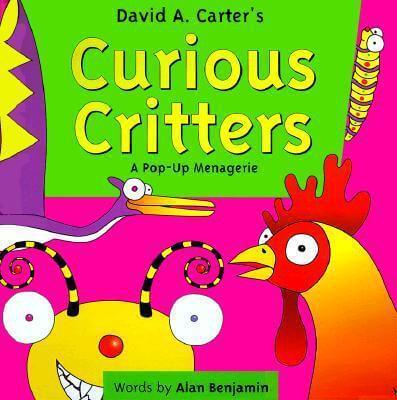Twas the season of giving
And all through the stores,
Await bright racks and shelves,
Filled with holiday books galore!
Indeed, this year's crop seems especially good, starting with Bonny Becker's hilarious The Christmas Crocodile (4-8). In an old Victorian home to a young girl named Alice Jayne and her eccentric relatives (including prudish Aunt Figgy and world adventurer Uncle Theodore) comes a mysterious, very hungry present a crocodile. While Uncle Theodore thinks the beast would make splendid shoes, and Figgy wants him sent to an orphanage, Alice Jayne would prefer to keep the croc, despite the havoc his chomping jowls wreak. Artist David Small, well known for his work in Imogene's Antlers, The Library, and The Gardener, makes this lively story all the better with his fanciful illustrations that'll have you laughing out loud (especially when Aunt Figgy's toes get nibbled).
Illustrator Jan Brett, creator of holiday cheer in books such as The Wild Christmas Reindeer and Christmas Trolls, now puts her distinctive touch on The Night Before Christmas. Her elaborate designs combine Norwegian coziness (as seen on the reindeer's blankets and the intricately carved sleigh) with Victorian visions of sugarplums and stockings. Brett adds her own twist to the classic by including two stowaway elves in Santa's sleigh.
Julia and Robert Van Nutt have created a possibility-filled world in A Cobtown Christmas, the first in a series of stories about folks in an 1845 American town. The story unfolds in diary entries written by a spirited ten-year-old named Lucky Hart. As the town prepares for Christmas and a special concert in which Lucky will sing, a blind man who doesn't speak English arrives in town. It's nice to hear this is a series, because Cobtown is a cheery, action-packed place readers will look forward to revisiting.
Young readers will enjoy Nancy Tafuri's Counting to Christmas (ages 2-5), in which a young girl describes her favorite family activities: making cards, baking cookies, wrapping presents, and stringing popcorn and cranberries. The spare text and bold images make this a perfect choice for toddlers and young preschoolers. Also included are recipes and instructions for the activities described within the story.
Alice Cary is a reviewer in Groton, Massachusetts.


















